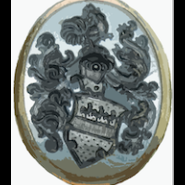Not stable netsupply.
-
Recently Browsing 0 members
- No registered users viewing this page.
-
Topics
-
-
Popular Contributors
-
-
Latest posts...
-
12
Report Fed-Up Nottingham Dad Moves Family to Thailand for New Life
The "nomad family 9-5 escape channel", but like dropshipping, its more of a product itself to sell howto's on, than the hopium it sells about freedom. Researched visas, but no mention of what one he is on......Elite ? HGV driver, won't be DTV anyway. -
77
Do you know your wife/girlfriends body count?
This pretence of wisdom and authority you insist upon maintaining makes me laugh. -
47
THAILAND LIVE Thailand Live Monday 14 July 2025
Pattaya Brawl Over Bike Parts Turns Deadly: Mechanic Charged Picture courtesy of Pattaya News In Pattaya, a dispute over motorbike parts tragically escalated into a fatal confrontation, resulting in the death of a 33-year-old man and leaving his friend facing a murder charge. Full Story: https://aseannow.com/topic/1366671-pattaya-brawl-over-bike-parts-turns-deadly-mechanic-charged/ -
0
Crime Pattaya Brawl Over Bike Parts Turns Deadly: Mechanic Charged
Picture courtesy of Pattaya News In Pattaya, a dispute over motorbike parts tragically escalated into a fatal confrontation, resulting in the death of a 33-year-old man and leaving his friend facing a murder charge. The incident occurred in the early hours of July 12, when 31-year-old mechanic Somjet Sapprasert allegedly attacked 33-year-old Sonthaya “Toomtam” Nuchlek with a sharpened wooden stick. The quarrel, reportedly over the pricing of spare parts, took place near the railway tracks around 11 am. Lieutenant Wongsathorn Marknanta revealed that Sonthaya's relatives quickly brought him to Pattaya Hospital, where he was treated for severe injuries to his head and back, but sadly, he did not survive. By early afternoon, authorities had traced the suspect's blue Mitsubishi Strada, the vehicle used to transport Sonthaya to the hospital. Somjet was apprehended at his home and, after hours of questioning, confessed to the attack. He claimed that Sonthaya had initiated the violence, using a metre-long stick intended "for hitting dogs." Somjet recounted that he managed to seize the weapon and struck back in a moment of rage. “I hit him until he dropped,” Somjet reportedly admitted. He described how Sonthaya gasped, “I give up, I’m sorry,” before the two seemingly reconciled. However, Sonthaya soon collapsed again. In a state of panic, Somjet fetched his pickup to take him to the hospital. Throughout the ordeal, Somjet maintained he did not intend to flee, staying at the hospital for several hours before returning home, where the authorities later found him. “I lost it. I didn’t mean to kill him. I’m sorry to his family,” he stated. Police have collected evidence, including the stick and Somjet's clothing. Charges of causing bodily harm leading to death have been filed against him, and he remains in custody. The scene of the incident, near the railway tracks where the fight unfolded, was visited by journalists. However, Sonthaya’s relatives expressed disbelief, questioning why he would be there. The family is preparing for Sonthaya’s funeral at Wat Thung Krad on July 13 and has vowed to seek justice. The investigation continues into this tragic altercation, which has brought grief to both families involved, and left the local community in shock. Adapted by ASEAN Now from The Thaiger 2025-07-14 -
18
Trump's most ardent supporters are in revolt
People should chase him out of White House- 1
-

-
18
-
-
Popular in The Pub




.thumb.jpg.3ee24d9400fb02605ea21bc13b1bf901.jpg)

.thumb.jpeg.d2d19a66404642fd9ff62d6262fd153e.jpeg)



Recommended Posts
Create an account or sign in to comment
You need to be a member in order to leave a comment
Create an account
Sign up for a new account in our community. It's easy!
Register a new accountSign in
Already have an account? Sign in here.
Sign In Now